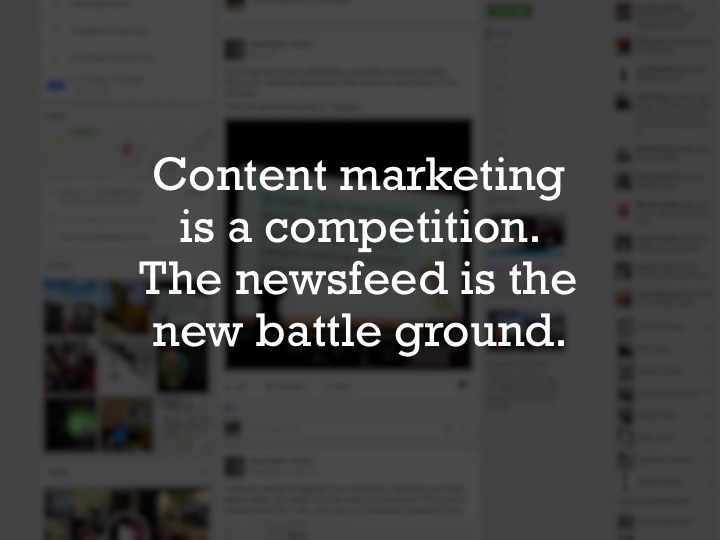Content managers or community managers (CMs) have an enormous effect on the success of your marketing efforts. Destination marketing organizations (DMOs) should invest the time and resources to make this crucial position a top priority, because the stakes are too high to do otherwise.
Consider this scenario:
You are running for President. It’s an incredibly competitive race and your victory plan is all laid out. You’ve hired the finest, most experienced campaign manager to design your strategy, an Ivy League-educated finance director to keep track of your money, a bull of a fundraiser to gather resources from partners, and an on-the-ball meetings/events planner to execute your campaign stops. You even splurged on a custom company vehicle: a $200,000 bus with your logo (created by your NYC graphic design agency) plastered all over it.
As you step to the podium to deliver your first campaign speech that will be seen by tens of millions of potential voters, you glance down at your notes. They were written by your 21-year-old, just graduated with a Medieval Studies degree, this-is-my-first-job, speechwriter. Good luck.
Like presidential candidates, destination marketing organizations (DMOs) communicate on a daily basis with thousands of people. Email, Facebook, Twitter, Snapchat, blogs, websites and advertisements are just a few of the important tools they use to do this. Yet the person who produces those communications is often on the lowest rung of the organizational ladder, a puzzling reality in the destination marketing world. This is backwards.
Simply put, a DMO’s CM is one of, if not the most, important person in the organization. Here’s why:
1. A CM is worth millions of dollars.
Destination marketing is a competition. If a traveller decides not to visit your destination, they are most likely going to spend their money in a competing one very similar to yours. When they’re indulging in your competition, 76% of them will post on social media about their trip, making their friends more likely to also visit your rival. However, a CM is on the frontlines every day using their skills to persuade those thousands of travellers. Their audience is enormous in scale. How a CM writes, creates and engages can immediately change the mind of thousands of potential visitors, for the good or the bad. If the CM excels at their job, they are worth millions of dollars of visitor spending to your community. If they are below average, they will potentially lose millions of dollars for your community. “Cheap” community management is expensive.
2. 87% of travellers use the internet to plan their trip.
A DMO’s task is simple: increase the amount of visitors to the destination. The internet is the most influential medium in increasing visitation. This means the CM is the CEO of the most impactful and important part of your organization. If your DMO chose not to produce digital marketing, visitation would be impacted. A CM is leading the department of a DMO that most affects the organization’s ability to accomplish its goals. Quality digital marketing directly impacts visitation. Poorly constructed, amateur digital marketing negatively affects visitation. A DMO must strive to create nothing less than world-class digital marketing. Who would be creating that world-class digital marketing? A world-class CM devoted to making the incremental gains that push your DMO’s performance to the top. Hire one, or reward the one you already have.

3. The CM has the most touch points of anyone in your DMO.
A DMO’s community manager tactfully places the destination’s message in front of millions of people. Millions. The CM is the equivalent of the TV show host, a best-selling author and the lead singer of a rock band. They are the voice of your destination. If you were producing the Super Bowl for NBC, you wouldn’t give the announcer job to an intern, would you?
4. Content management is a honed, educated skill.
Creating and posting content is one of the most complex tasks in a DMO. In one day, a CM incorporates dozens of skills from creative writing, copy editing, image selection, audience research, data analysis, ad management, budgeting, customer service, consumer engagement and product knowledge. These skills are demanding, difficult and, if done well, can take your DMO’s content marketing above the competition. Unlike highly-paid designers, videographers, or researchers, who may have 6 months to complete their projects, CMs must produce their content in a matter of minutes, on a daily basis. A CM’s skillset requires too many crucial elements for a DMO to neglect content managers as top-priority employees.
This list could go into the hundreds, but a CM is writing it and this CM knows they’re a paragraph away from eclipsing the optimal length of a blog post. In short, value your CM’s opinion, give them the flexibility they need to be creative and the time they need to be effective at their job. Most importantly, recognize their importance in accomplishing your DMO’s goals.
Click to read more about why content managers need to make incremental gains to help their destinations succeed, and see John Freeman’s full presentation from Simpleview Summit 2016.
More related reading: Why destination marketing organizations need to become experts at consumer engagement
Featured image credit: Tamaki Sono, Flickr









Thank you so much for this, this is amazing material!
‘87% of travellers using the internet to plan their trip’. Does this refer to all travellers – i.e. corporate and leisure and is this a globally-based percentage? Thank you!
Hi Sarah,
That stat comes from this AdWeek article/infographic: http://www.adweek.com/socialtimes/online-travel-industry/467349 Unfortunately, it does not specify between leisure and business.
However, Google research about internet usage for travel planning reveals that the percentages are nearly equal for both leisure and business: https://storage.googleapis.com/think/docs/2014-travelers-road-to-decision_research_studies.pdf
Thanks for asking!
-John
Hi John,
“If the CM excels at their job, they are worth millions of dollars of visitor spending to your community. ” Do you have real-life examples of CMs actually adding such value to the destination they were working for?
I have seen several attempts of DMOs installing CMs which all failed mainly due to two issues:
1. people generally distrust bloggers, community managers and such promoting destinations who are paid for their work by the promotion organisation itself. In the presidential election metaphore described in your post above it is like Trump’s campaign team manager saying: ‘ I approve of Donald Trump’s message’ ;).
2. the CMs only published/forwarded ‘politically correct’ content: all happy visitors, sunshine and pcitures taken from right angles (to hide the monstrous chemical plant next to the beautiful castle ;).
In addition: do I understand you do not agree with the fourth myth in: https://destinationthink.com/4-outdated-destination-marketing-ideas/ (That promotion is the DMO’s responsibility)?
Nicolaas
Nicolaas,
Thanks for the comment and bringing up these points. I’ll go through one by one to give my thoughts.
Our company has created a Potential on Investment calculator for social media that is able to put a monetary value on channels. This POI takes into account interactions and engagement on the social channels, which are greatly affected by the quality of content management. So high-quality content management can swing the POI by large amounts of money, the same way that low-quality content can swing POI negatively. When we totaled up the POI for several destinations, the impact of social media was well into the millions. Here’s some more info on this initiative via tnooz: https://www.tnooz.com/article/destinations-establish-way-of-measuring-roi-of-social-media/
From my previous experience working at a DMO, we commissioned an online website visitor surveys that determined each unique visitor to the website ended up spending an average of over $40 in the destination. Then when we calculated website traffic delivered from the Facebook page, multiplied it by 40 and the answer was well into the seven figures. There’s several ways to add up a CM’s impact, but everyway we look at it, social media is so massive and convincing that its value in tourism spending has to be measured in the millions.
I agree with both of your reasons on why CMs fail at DMOs. A content manager is not responsible for being a one-way megaphone for the destination and will fail if that is the case. In all the destinations that we create content for, we strive to make content that connects, adds value to a potential traveller, stirs the emotions of the audience and grabs their attention. The value of DMO-generated posts comes from when people deem the content worthy enough to share it with their friends, or leave a spirited comment or be compelled enough to post their own photo. Content should start conversations. To use your campaign team analogy, a CM doesn’t tell people who to vote for, but they try and raise a conversation and give compelling reasons with the hope that the audience will a) be convinced b) share their beliefs with people close to them.
100% agree with you about the negative effects of sharing pristine, photoshopped, sunny photos of a destination all of the time. The world has become allergic to staged stock photography and they see right though it. That’s why we recommend using UGC, as its much more authentic, believable and usually more eye-catching!
Lastly, with the outdated ideas, there’s an explanation of Idea 4 that I agree with. “managing word of mouth, improving the destination experience and creating valuable content that helps to tell your story might all offer improved ROI compared to purchasing people’s attention with advertising.”
Thanks again for your comments and starting the discussion!
-John